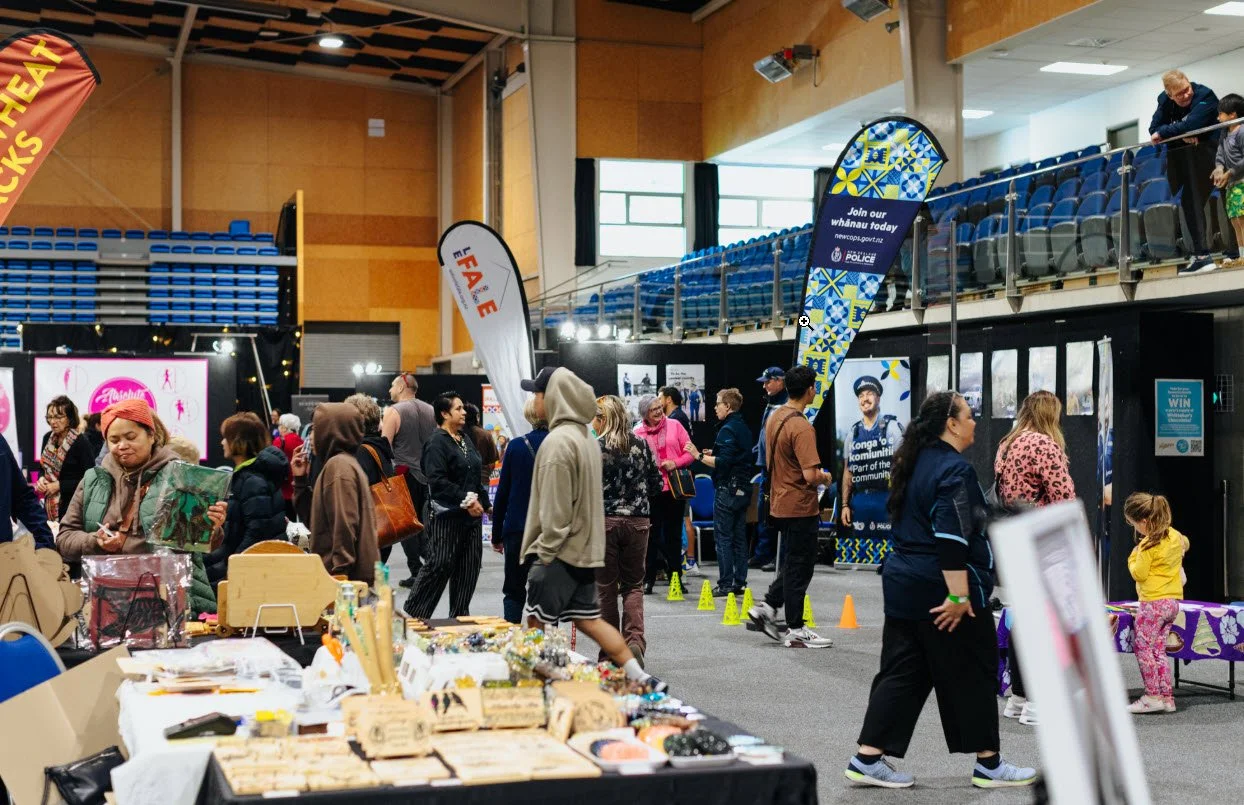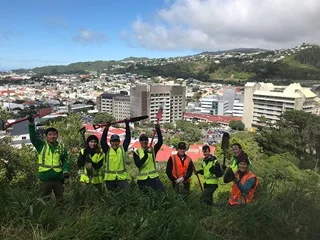Funding boosts state of the arts in the capital
Capital’s seniors celebrate golden years with Te Wiki Kaumātua Seniors' Week 2019
Buckets of fun planned for Cuba Mall 50th birthday
Motorcycle awareness campaign targets riders and drivers
What on earth is happening this Conservation Week | Te Wiki Tiaki Ao Tūroa
Kia Kaha Te Wiki o Te Reo Māori
Drivers urged to stay alert at intersections
Capital celebrates a decade as a Fair Trade City
Mayor pays tribute to Raymond Boyce
Wellington Mayor Justin Lester today paid tribute to the contribution to the arts community made by Raymond Boyce, who died today at the age of 91.
Mr Boyce, who migrated from England to New Zealand in 1953, was one of New Zealand’s most significant designers for theatre and the performing arts, as well as being an expert puppeteer and puppet designer.
“Raymond was a tremendous worker for the arts, theatre especially, not only Wellington but throughout New Zealand,” said the Mayor. “He had an international reputation.
“He focused on two rather specialist areas of the arts - theatre design and puppetry - and excelled in both. Wellington will miss his expertise, energy and enthusiasm.”
Mr Boyce was much honoured during his time in New Zealand, including being made a Member of the British Empire in 1977 and being named an Arts Icon in 2007.
-Ends
Mixed results for Public Place Recycling bin scheme
Wellington City Council introduced a Public Place Recycling bin trial to the capital last May, and now just over a year on, a recent audit show it’s doing well – but we could do better.
The first bin was installed in Cuba Mall, with eight additional recycling stations rolled out around the city for the public to recycle glass, plastic, cans and paper/cardboard items – with separate bins for rubbish.
An audit of recycling collected in the bins in October 2018 showed a few teething problems with a 48% contamination rate, compared with the most recent one which showed a much improved 17% contamination rate.
The trial, a joint project with the Love NZ/Be a Tidy Kiwi campaign delivered by the Packaging Forum, will determine the future of public place recycling in the future, and Mayor Justin Lester is happy with the results so far.
“This additional recycling system has resulted in a good number of recyclable items that can be processed and repurposed being diverted away from the landfill.
“The Council has run a recycling trial in the past, but the bins were constantly contaminated with rubbish so it came to an unhappy end. We're pleased to see that public education and environmental consciousness, combined with a new design, multilingual instructions, and coordinated colour coding across the country, has proved to be more of a success this time around.”
Councillor Iona Pannett, Portfolio Leader for Infrastructure and Sustainability, says that although it’s good news to see the contamination rate appearing to decrease, at 17% there’s still room for improvement.
She also points out that the amount of products diverted from landfill throughout the trial is relatively small when compared with kerbside collection. Approximately 6 tonnes of plastic, paper, card and cans has been diverted and around 29 tonnes of glass, compared to the 6,920 tonnes of co-mingled recyclables and 4,650 tonnes of glass that are collected from households a year.
“However, the bins do give out a good message about the need to recycle. The Council encourages Wellingtonians to figure out whether they need a product in the first place, or promotes use of products like keep cups for coffee that can be used again and again,” she says.
Council’s Waste Minimisation Project Officer Aviva Stein says the results are promising, but a recent audit found the most common contaminants were soft plastics, dirty napkins and compostable packaging. None of these can be recycled and should go in the rubbish bin instead.
“It’s hard to compare with different trials as there are so many different models and audit methodologies – but so far, so good. The most disheartening thing though, is seeing a whole bin load of recyclable items ending up in landfill because it’s contaminated with unaccepted waste.
“We know it can be confusing, but we ask that people follow the instructions, think about what they’re putting in the bins, and if they’re really unsure to put it in the rubbish bin – and check out our online recycling directory later on for future reference.”
Council allocated $300,000 from its annual waste minimisation levy funds which it receives from the Ministry for the Environment. At the conclusion of the trial a decision will be made as to the practicality and cost of implementing public place recycling in Wellington permanently.
-WCC
Seatoun Tunnel traffic signals to be tested before going live
Seatoun Tunnel’s new traffic signals will be tested next week (9-12 July) to check they work correctly. The new signals are at each end of the tunnel and will be used to control traffic during maintenance and improvement works and in the event of a major incident.
There’s a lot we have to check before the lights go operational,” says Wellington City Council Signals Project Manager Tim Kirby. “We’ll be doing the testing between 9am and 2.30pm to minimise any disruption. Once we’re happy that everything is working as it should, the signals will be turned off until such time as they are needed to help manage traffic during the installation of new interior lighting in the tunnel and earthquake strengthening work due to start in August.”
The new signals are a permanent fixture at both ends of the tunnel. When there are no works taking place in or near the tunnel, the signals will be turned off.
There is a traffic camera located at the Seatoun entrance to the tunnel and within the tunnel so we can monitor traffic flows and alter the phasing to deal with the busy morning and evening peaks,” says Tim. “The cameras are also there to ensure that people observe the road rules and stop when the lights are red.”
Once the signals are operational work can start on the installation of state-of-the-art LED interior lighting and emergency lighting. The quake-strengthening work will also start.
Work starts in earnest in August and is expected to be complete by mid-2020. “This is a major project and will make the tunnel safer and more resilient in an earthquake,” says Faiz Tawfeek, the Council’s Structures Team Leader. “We’ll be able to do most of the work between 9am and 3.30pm when traffic levels are lower and we’ll try to limit weekend work.” The project includes strengthening the tunnel portals and retaining walls and repointing, cleaning and painting the brick tunnel interior.
While crews are working the tunnel will be down to one lane and all traffic (including cyclists) controlled by the traffic signals. Pedestrians and cyclists will be able to use the tunnel throughout the project but at times they will have to wait and be guided through.
“We’ll have electronic signage at both tunnel entrances to let people know what’s happening,” says Faiz. “We’ll also communicate directly with nearby residents and businesses, particularly when we have noisy work such as drilling to do.”
Installing the new interior lights will require the tunnel to be closed and traffic detoured. “We’ll do this work at night when the number of people needing to travel through the tunnel is significantly less than during the day,” says Faiz. “Rest assured we will let everyone know when we have to detour traffic.”
-WCC















